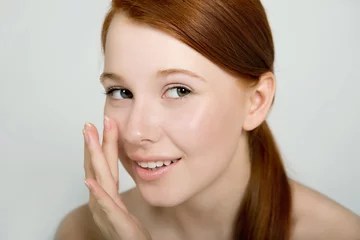What Are the Best Makeup Shades for Your Skin Tone?
Finding the perfect makeup shades can transform your look by enhancing your natural beauty. The right colors complement your skin tone, making you glow effortlessly. This guide helps you discover the best foundation, lipstick, and eyeshadow shades tailored to your skin tone, with expert tips for flawless application.
Understanding Your Skin Tone
What Is a Skin Tone?
Your skin tone is the natural color of your complexion, which can be categorized into three main types:
- Fair/Light: Pale and often prone to redness.
- Medium/Olive: A warm undertone with a golden or olive base.
- Deep/Dark: Rich, deep tones with cool or warm undertones.
How Does Undertone Affect Shade Selection?
Undertones play a significant role in choosing makeup shades. They are categorized as:
- Warm: Golden, yellow, or peachy hues.
- Cool: Pink, red, or bluish hues.
- Neutral: A mix of warm and cool tones.
Understanding the Difference: Undertones vs. Skin Tones
When choosing the right makeup, it’s essential to grasp how undertones differ from skin tones. These two elements play a major role in finding products that complement your natural coloring.
What Are Undertones?
Undertones are the subtle hues beneath the skin’s surface that affect your overall complexion. They fall into three categories: cool, warm, or neutral.
- Cool undertones: Characterized by blue or purple veins on your wrist.
- Warm undertones: Indicated by green veins.
- Neutral undertones: If veins appear blue-green, your undertone is neutral.
What Are Skin Tones?
In contrast, skin tone refers to the visible color of your skin. Ranging from fair to deep, these are the hues you typically see as labels on foundation and concealer products.
Key Differences:
- Visibility: Skin tones are visible, while undertones are hidden beneath the surface.
- Impact on Makeup: Undertones guide you in selecting the right shades that enhance your natural hue, whereas skin tones help match the product to your surface color.
Understanding both undertones and skin tones will ensure your makeup perfectly complements your natural beauty.
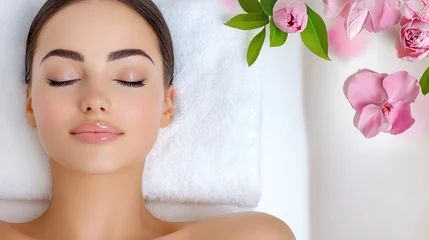
Unlocking the Perfect Sheer Glow: Mixing Foundation and Moisturizer
Choosing the Right Foundation Shade
Step-by-Step Guide to Find Your Perfect Foundation
- Identify Your Undertone: Check your veins (green for warm, blue for cool, or a mix for neutral).
- Swatch Along Your Jawline: Test shades in natural light.
- Blend and Observe: The perfect shade will disappear into your skin.
Achieving a Three-Dimensional Foundation Look for Dark Skin
Creating a “three-dimensional” foundation look on dark skin involves understanding and embracing the natural variations in your complexion. Here’s how you can achieve this stunning effect:
- Recognize Your Skin’s Varied Tones: Understand that your skin doesn’t have just one tone throughout. It’s a blend of various shades, and capturing this diversity is key to a natural, multi-dimensional look.
- Use Two Shades of Foundation:
- Lighter Shade: Select a foundation that is slightly lighter than your overall skin tone. Apply this lighter shade to areas that naturally catch the light, like the center of your forehead, under your eyes, and along the tops of your cheekbones.
- Darker Shade: Choose a foundation that’s a bit deeper than your skin tone. Use it to contour or enhance areas that would naturally be in shadow, such as the hollows of your cheeks, the sides of your nose, and the jawline.
- Blend Seamlessly: Merging these shades skillfully is essential. Use a blending sponge or a foundation brush to ensure there are no harsh lines or sudden changes in color. The goal is a flawless gradient that accentuates your face’s natural structure.
- Experiment with Different Brands and Formulas: There are numerous products available that cater to a range of skin tones and finishes:
- Some renowned affordable options are known for delivering great results.
- For those willing to invest a bit more, there are high-end products that offer buildable coverage and long-lasting wear.
- Customize with Powders and Concealers: To further enhance the dimension:
- Use a setting powder that complements each foundation shade.
- A versatile concealer can subtly adjust areas where you want even more light or depth.
By combining these techniques and products thoughtfully, you can achieve a beautifully layered, three-dimensional look that truly showcases your skin’s unique beauty.
best makeup shades, Pro Tip:
Discovering the Perfect Makeup Shades for Light Skin with Cool Undertones
Diving into current makeup trends like glass skin or neon eyeliners can be exciting, yet for those of us with light skin and cool undertones, the real challenge is selecting the right shades that enhance our natural beauty. Finding a foundation that blends seamlessly with your complexion is essential—no one wants that unwanted line on the jawline. Here’s a roadmap to navigating those overwhelming beauty aisles.
Foundation: Subtle Hints of Blue
When it comes to foundation, look for options with a hint of blue or pink undertones. These tones seamlessly blend with cool undertones, ensuring that the product flatters your natural skin color rather than contrasting harshly.
Eye Makeup: Playing with Color
For eye makeup, choosing colors with cool undertones can accentuated the icy elegance of light skin. Experiment with:
- Soft Pastels: Shades like lilac and icy blue can create a soft, ethereal look.
- Neutrals with a Twist: Gray or cool taupe can add depth without overpowering.
Blush: Keeping it Cool
A blush with pink or berry shades can bring out a natural flush, complementing cool undertones beautifully. These colors can brighten the complexion without clashing with your skin’s natural hues.
Lips: Classic and Bold
For lips, consider:
- Berry: Shades like cranberry or raspberry can add a sophisticated pop of color.
- Cool Reds: Reds with a blue undertone offer a classic yet impactful statement, ideal for any occasion.
General Tips:
- Avoid warm, yellow-based products, as they may create an unwanted contrast.
- Always test product swatches under natural lighting to ensure the shade matches well with your undertones.
Embrace these tips as a guideline to accentuate your natural beauty with confidence. By choosing the right shades, you’ll find that makeup can be a seamless extension of your personal style.
Here’s a curated list of products to help you identify and complement your undertone, along with their specific uses:
1. Foundation Match Test Kits
These kits include multiple shades for testing against your undertone:
- Sephora Color iQ Foundation Match Kit
- Estée Lauder Foundation Finder Sampler Pack
- Fenty Beauty Pro Filt’r Shade Finder Set
2. Vein Checker Tools
- LED Skin Analyzer Device: Helps you view undertones more clearly.
- Handheld Vein Finder Light: Makes it easier to distinguish the vein colors.
3. Undertone Enhancing Products
best Makeup Products for Medium-Dark Skin Tones
Navigating the world of makeup can be exciting, especially when you have a medium-dark skin tone that opens the door to a diverse palette. Here’s a guide to help you select the products that enhance your natural beauty.
Foundation
Start with a foundation in warm honey shades. These tones best complement your complexion, providing a natural and even finish. Many brands offer extensive shade ranges, so you’re sure to find one that matches perfectly.
If your complexion leans more toward medium-dark than medium-light, a honey-colored foundation will suit you well. Makeup artists often note that this skin tone is versatile, allowing you to experiment with a variety of makeup looks. You’ll likely find it easy to locate products that work beautifully for you, given the wide range of options available.
Eyeshadows and Blushes
Eyeshadows and Blushes
Feel free to play with bright or metallic eyeshadows. Such bold choices can enhance your features and add a glamorous touch to your look. Don’t hesitate to apply concentrated pink blushes either—they offer a flattering contrast that brings vitality to your cheeks.
Complementary Accent Colors for Dark Skin
When considering accent colors to complement dark skin, think about incorporating deep, rich shades into your makeup routine. Colors like chestnut, plum, and burgundy can add depth and dimension to your overall look. These shades work beautifully with darker complexions, offering a harmonious blend that enhances your natural beauty.
In addition, experimenting with shades of reddish-browns can also provide a sophisticated touch, perfectly balancing with the vibrancy of metallic eyeshadows or the freshness of pink blushes. By selecting these complementary colors, you ensure that your makeup not only stands out but also resonates with your skin’s natural tones, creating a cohesive and stunning appearance.
Lip Colors
Medium-dark skin tones can carry pale lip colors confidently. Whether you prefer a subtle nude or a bold lip, there’s a shade out there that will highlight your natural beauty.
Embrace your medium-dark skin tone with these makeup tips, and enjoy the freedom to explore a wide array of products and shades.
The best makeup shades; For Warm Undertones:
- MAC Studio Fix Fluid Foundation in NC Shades: Compliments golden tones.
- NARS Radiant Longwear Foundation in Stromboli: Matches warm, olive undertones.
best makeup shades For Cool Undertones:
- Bobbi Brown Skin Long-Wear Weightless Foundation in Cool Beige: Enhances pink undertones.
- L’Oréal True Match Foundation in C Shades: Affordable and great for bluish tones.
best makeup shades For Neutral Undertones:
Choosing the perfect neutral makeup shade can elevate your natural beauty effortlessly. To start, consider this universal guideline: Select a color within two shades — either lighter or darker — than your natural cheek, eyelid, and lip color. This ensures a harmonious and flattering look.
- Clinique Even Better Clinical Serum Foundation in Neutral Shades: Works well for balanced undertones, giving your skin an even, radiant finish.
- Charlotte Tilbury Airbrush Flawless Foundation in Neutral Shades: Provides a natural look, enhancing your features without overpowering them.
When following a neutral makeup routine, don’t underestimate the power of a good concealer. It’s an absolute must to keep your makeup looking fresh and natural throughout the day. Highlighting with neutrals within the two-shade realm is also a reliable strategy. Shimmer products can draw attention to areas you want to emphasize, giving you that coveted glow.
Engage your features with subtle highlights and balanced undertones to create a polished, yet understated look. These tips, paired with the right products, can help you achieve a flawless finish that complements your unique complexion.
The Best Makeup Products for Medium-Dark Skin Tones
Navigating the world of makeup can be exciting, especially when you have a medium-dark skin tone that opens the door to a diverse palette. Here’s a guide to help you select the products that enhance your natural beauty.
Foundation
Start with a foundation in warm honey shades. These tones best complement your complexion, providing a natural and even finish. Many brands offer extensive shade ranges, so you’re sure to find one that matches perfectly.
Eyeshadows
Medium-dark skin tones are incredibly versatile, allowing you to experiment with bold and vibrant eyeshadows. Rich metallics and bright hues can really make your eyes pop. Don’t hesitate to play with colors like gold, emerald, or cobalt blue for a striking look.
Blush
Opt for concentrated pinks or deep corals. These shades highlight your cheeks beautifully, providing a healthy and radiant glow without appearing washed out.
Lip Color
Pale lips can be a stunning contrast against medium-dark skin tones. Think nude shades with a hint of pink or peach to add subtle sophistication. However, don’t shy away from daring colors like deep reds or vibrant purples for a bold statement.
With these makeup tips, embrace the full spectrum of colors that complement your unique complexion, and enjoy the creative possibilities that await you.
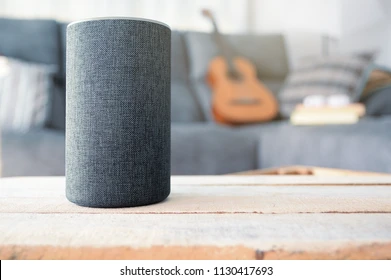
Discover the Ultimate Foundation: Alexa’s Top Picks!
4. Undertone-Specific Lipsticks
Warm Undertones:
- Charlotte Tilbury K.I.S.S.I.N.G Lipstick in Stoned Rose
- Fenty Beauty Gloss Bomb in Fenty Glow
Cool Undertones:
- MAC Ruby Woo Lipstick
- Maybelline SuperStay Matte Ink in Pioneer
Neutral Undertones:
- Dior Addict Lip Glow in 001 Pink
- NARS Velvet Matte Lip Pencil in Dolce Vita
5. Color-Correcting Primers
- Smashbox Photo Finish Adjust Primer (Green for Warm Undertones)
- NYX Color Correcting Primer (Lavender for Cool Undertones)
6. Undertone-Enhancing Highlighters
Warm Undertones:
- Becca Shimmering Skin Perfector in Champagne Pop
Cool Undertones:
- Benefit High Beam Liquid Highlighter
Neutral Undertones:
- Hourglass Ambient Lighting Powder in Luminous Light
These products help you identify and enhance your natural undertone, offering versatile options for your beauty routine.
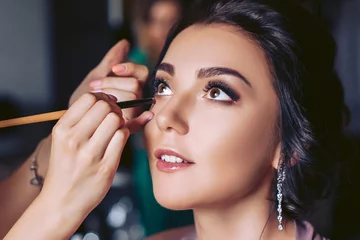
Perfecting Your Look: How Are You Doing Your Makeup?
Selecting Lipstick for Every Skin Tone
Best Lipstick Shades Based on Skin Tone
- Fair/Light Skin: Soft pinks, peachy nudes, and classic reds.
- Medium/Olive Skin: Coral, terracotta, and bold berries.
- Deep/Dark Skin: Rich burgundy, plum, and chocolate browns.
Eyeshadow and Blush Tips for Flattering Looks
“For those with olive skin tones, the recommended eyeshadow color to elevate your look is teal. This shade is highly favored for olive complexions because it complements the natural undertones without overpowering them.
Avoid traditional blues, as they might not enhance your features as effectively. Teal, being a versatile and rich hue, not only adds depth to your eyes but also highlights the unique aspects of olive skin.
To ensure your makeup blends perfectly, start by choosing foundations that match your skin tone. Test a few shades along your jawline, ranging from your natural color to one slightly darker and one slightly lighter. Select the one that seamlessly vanishes into your skin.
With the right foundation and a stunning teal eyeshadow, your makeup will flawlessly flatter your complexion.
Enhancing Your Olive Glow
Olive skin offers a beautiful canvas with its unique undertones that can be enhanced with the right makeup choices. Here’s how you can bring out the best in your complexion:
- Foundation: Look for foundations with a slight yellow or golden undertone to match your natural hue. This will provide a seamless blend into your skin, enhancing your natural beauty.
- Blush and Bronzer: Opt for peachy or coral blushes to add a warm glow to your cheeks. A light bronzer can also accentuate the natural warmth of olive skin, giving you a sun-kissed look.
- Lip Colors: Olive skin pairs beautifully with a range of lip colors. From rich berry tones to earthy nudes, experiment to find shades that complement your undertones.
Remember, olive skin is versatile and can carry off both subtle and bold looks, so don’t hesitate to explore and find what makes you feel your best. By carefully selecting makeup that enhances your undertones, you’ll create a look that is both striking and effortless.”
What Are the Best Eyeshadow Colors?
- Fair Skin: Champagne, soft pinks, and taupe.
- Medium Skin: Warm golds, bronzes, and deep greens.
- Dark Skin: Vibrant purples, metallics, and deep blue.
What Makeup Colors Should People with Fair Skin Avoid?
If you have fair skin, steering clear of makeup shades that clash with your complexion is crucial to achieving a natural, harmonious look. One cardinal rule is to avoid orangish-red tones in your foundation, blush, eyeshadow, and lip colors. These hues can unintentionally make your skin appear dull and washed out.
Makeup artist Afton Williams notes that individuals with fair skin often have cool undertones, which can make finding the perfect shade a challenge. Christine Walsh adds that colors can be too pigmented and harsh, leading to foundations that look overly pink or yellow and bronzers that appear too red or intense.
Colors to Avoid:
- Orangish Reds: These can give the skin a yellowish undertone, making it look sallow.
- Bright Oranges: Both in blush and eyeshadows, as they can overpower fair skin.
- Dark Browns: These can be too harsh and stark against lighter complexions.
Tasha Reiko Brown-Jovel advises staying away from orangish-red shades, as they can make fair skin look sallow and washed out. Instead, she suggests opting for softer tones to enhance the natural beauty of fair complexions.
Recommended Alternatives:
- Soft Pinks and Beiges: These shades complement fair skin, offering a subtle and fresh appearance.
- Cool-toned Bronzers: Rather than warm bronzers, opt for cooler shades to prevent any orange hues from overpowering your look.
By choosing these recommended alternatives, you can achieve a look that’s both flattering and true to your unique skin tone, avoiding unwanted undertones and achieving a balanced, radiant appearance.
Blush Colors to Enhance Your Glow
- Fair Skin: Light peach and soft pink.
- Medium Skin: Warm apricots and roses.
- Dark Skin: Rich berry and warm orange tones.
Fun Makeup Trends to Try
If you’re looking to spice up your makeup routine, there are plenty of exciting trends to explore.
1. Dewy Glass Skin:
Achieving a luminous, almost translucent complexion is all the rage. This trend focuses on skincare just as much as makeup, using hydrating serums, light-reflecting primers, and minimal foundation to create a fresh, glowing look.
2. Bold Neon Eyeliners:
Add a playful pop of color to your eyes with vibrant neon liners. Ideal for making a statement, neon eyeliners work well with both subtle and dramatic looks, giving you the freedom to express your creativity.
3. Gradient Lips:
This trend, popularized in Korean beauty, involves blending two or more shades to create a seamless transition of color on your lips. Start with the darkest shade in the center and blend outward for an ombre effect.
4. Glitter Accents:
Perfect for a night out, glitter can be applied to your eyes, cheeks, or even lips. Whether you’re opting for a subtle shimmer or all-out sparkle, glitter adds a touch of whimsy and fun to any look.
5. Monochromatic Makeup:
For a cohesive and stylish appearance, try using the same shade family across your eyes, lips, and cheeks. This streamlined approach ensures a polished and sophisticated finish.
These trends not only allow you to experiment with different styles but also help you discover new aspects of your personal beauty aesthetic. Which one will you try first?
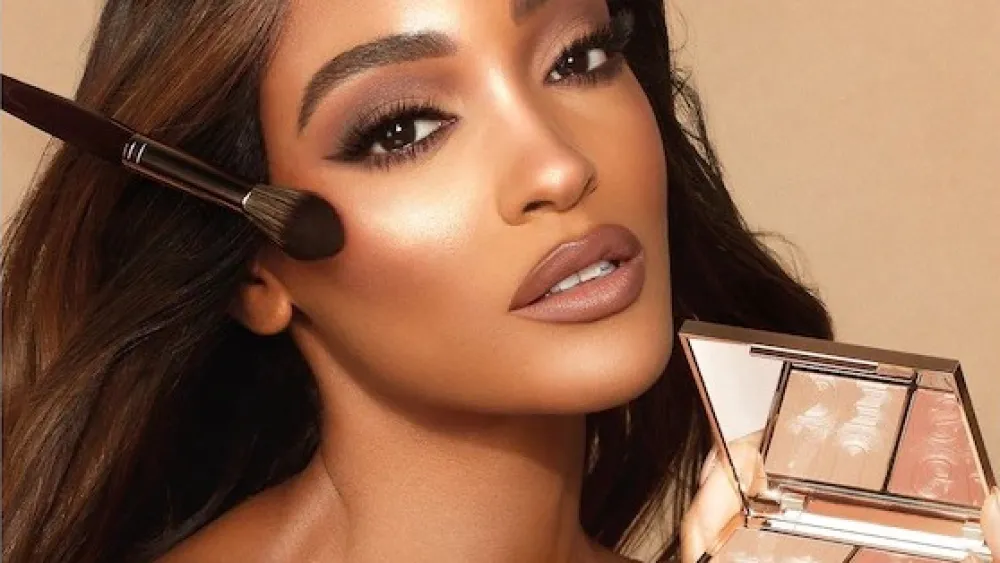
The Secrets of a Makeup Artist: Essential Products and Expert Tips to Elevate Your Makeup Technique
best makeup shades: Frequently Asked Questions
Q1: best makeup shades: How can I find my undertone at home?
Use natural light and look at your veins. Green indicates warm undertones, blue shows cool undertones, and a mix suggests neutral tones.
Q2: best makeup shades: Can I wear bold lipstick with fair skin?
Yes, bold reds and deep plums can create stunning contrasts for fair skin tones.
Q3: best makeup shades: Do I need separate foundations for summer and winter?
Yes, skin tone can change with sun exposure, so consider adjusting your foundation shades seasonally.
Q4: best makeup shades: Which makeup brands are best for diverse skin tones?
Brands like Fenty Beauty, NARS, and MAC offer inclusive shade ranges.
best makeup shades
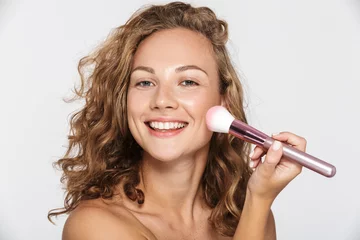
From Basic to Breathtaking: 3 Easy Makeup Hacks You Need to Try!
Makeup doesn’t have to be complicated to look incredible. Whether you’re a makeup beginner or just looking for some new techniques, these scientifically-backed and dermatologist-approved hacks can elevate your routine. Discover how to go from basic to breathtaking with just a few tweaks that personalize your look for any occasion. Why Makeup Hacks Matter Makeup…
Beauty Articles:
- [Mastering the Art of Makeup Application: A Step-by-Step Guide]
- [Climate Change and Clean Beauty: How They Intersect]
Other Links
Explore more articles like this @ Where And How Resources
If you found this article helpful, don’t forget to share it with your friends and followers!

